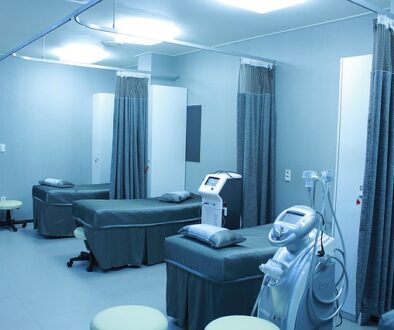Setting Capital Threshold
Our post titled The Foundation of Successful Healthcare Asset Management outlines the standards required to improve and maintain the accuracy of information comprising your personal property ledger. Just to review, a true accounting of assets owned will:
- Reduce equipment maintenance costs.
- Support future investment decisions for strategic assets.
- Reflect the correct value of assets owned, and minimize property taxes owed (for-profit facilities).
The first step towards a healthy asset listing is to define your capitalization threshold. The capitalization threshold will distinguish assets that should be recorded as capital from those that should be expensed. Asset acquisition costs below this threshold should be expensed as incurred, while those equal to or above should be capitalized and depreciated over the asset’s useful life.
Carefully consider the amount at which you set capital threshold; the lower the threshold, the greater number of assets listed in your ledger. It is much easier to maintain the accuracy of an asset ledger comprised of assets with an original acquisition cost of $5,000+/item than one comprised of assets with an original acquisition cost of $1,000+/item. The point being the threshold must be commensurate with the effort committed to maintaining the accuracy of the ledger. Statistically, for full-service medical centers, personal property items with an original acquisition cost of $5,000 or more often represent 80% of total cost for all personal property items.
Once you have defined the capitalization threshold, each acquisition can be measured against the threshold for a perfectly clear determination as to whether the asset should be capitalized or expensed. One word of caution would be to also define the level at which an acquisition should be measured. Here’s an example:
Your facility is expanding its Surgery department, and as part of this construction project, four new anesthesia machines are purchased. The invoice comes in at a total of $240,000, which exceeds the capitalization threshold. Although flags are raised and alarms are sounding to ‘Capitalize!’ slow down. Before entering this $240,000 into the ledger with a description something like ‘OR Expansion Anesthesia x 4,” imagine the head scratching and additional work you’ll encounter a few years down the line when you find out that one of the machines has been handed down to C-Section and the other has been traded in for credit toward the purchase of a couple new anesthesia units while the other two original machines are intended to remain in Surgery for their remaining useful life. Instead, at this magic moment of original acquisition, enter each anesthesia machine as a separate line on the ledger at $60,000 and record the unique property tag number for each. Now, you will be able to properly account for each one of the assets in the future, independent of the status of the other three.
Also note that by identifying the level at which to apply the threshold, you can help prevent assets being unnecessarily capitalized. For this example, an invoice comes in on the same project at a total of $5,500 and your threshold is $5,000. Based only on the invoice total, the acquisition could be entered in error at $5,500 with a description similar to “OR Expansion Fluid Warmers”; however, by measuring the cost of each asset, each fluid warmer, against the threshold, we determine four warmers were purchased and the acquisition cost for each is actually $1,375, which is below the threshold. The fluid warmers should not be capitalized.
By entering newly acquired assets into your ledger as a single line per individual asset (with acquisition cost at or above the capital threshold – as in our example), you remove some of the complexity that can complicate updating the ledger due to changes in the future, as well as prevent assets below the threshold from being capitalized in error.
Come Get To Know Us!
To learn more about Partners healthcare Group and the many services we offer, please visit us online at www.PHGWorks.com, call us at (615) 370-5014, or toll-free at 1-800-270-7582 . You can also visit us on Facebook, Twitter, Google or LinkedIn! We look forward to working with you in the future!



